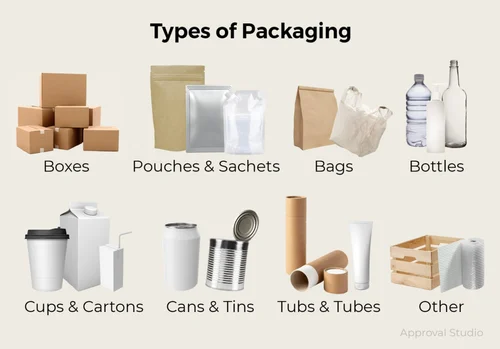PACKAGING IN AGRICULTURE
Packaging in agriculture involves the process of enclosing and
protecting agricultural products for storage, distribution, sale, and use.
IMPORTANCE OF PACKAGING
-
Packaging protects products from physical damage, environmental factors, and tampering, ensuring they reach consumers in good condition.
-
It helps to maintain the quality, freshness, and usability of products by preventing exposure to air, moisture, and contaminants.
-
Packaging enhances ease of use, storage, and transportation, making it more practical for consumers to handle and store the product.
-
It serves as a medium for product promotion, attracting attention, creating a lasting impression, and reinforcing the brand's identity.
-
Packaging communicates essential details like product contents, instructions, safety warnings, and expiration dates, aiding informed purchasing decisions.
-
It ensures that products remain safe for consumption or use by preventing contamination, unauthorized access, and mishandling.
Materials Used in Agricultural Packaging
-
Plastic : Widely used for its flexibility, durability, and ability to form airtight seals. Common forms include plastic bags, wraps, and containers.
-
Glass : Used for products that require a non-reactive container, such as certain types of preserves, dairy products, and beverages.
-
Metal : Often used for canned goods and products needing high protection against moisture and light.
-
Paper and Cardboard : Used for dry products like grains and for secondary and tertiary packaging. They are preferred for their recyclability and biodegradability.
-
Biodegradable Materials : Increasingly used to meet sustainability goals, these include packaging made from plant-based materials and other renewable resources.
CRITERIAL FOR PACKAGING
-
Product Type : The nature of the product (e.g., fruits, vegetables, grains) determines the type of packaging needed.
-
Protection Needs : The level of protection required against damage, contamination, and environmental factors.
-
Preservation Requirements : The need to maintain freshness and extend shelf life by controlling conditions like moisture and temperature.
-
Material Strength : The durability and strength of the packaging material to withstand handling and transportation.
-
Cost : The cost-effectiveness of the packaging, balancing protection and quality with affordability.
-
Sustainability : The environmental impact of the packaging materials, favoring recyclable or biodegradable options.
-
Consumer Convenience : Features that make the product easy to use, store, and carry, like resealable bags or easy-open lids.
-
Regulatory Compliance : Adherence to food safety standards and labeling requirements set by authorities.
-
Market Appeal : The attractiveness and design of the packaging to appeal to consumers and aid in marketing.
-
Technology : The use of advanced packaging technologies like Modified Atmosphere Packaging (MAP) or smart packaging for enhanced product quality and tracking.
-
Bulkiness : Requires strong, space-efficient packaging to handle size and weight.
-
Nature of Product : Fragile or irregular items need custom protective solutions.
-
Live or Frozen : Live products need air circulation and humidity control; frozen products need insulation and airtight sealing.


